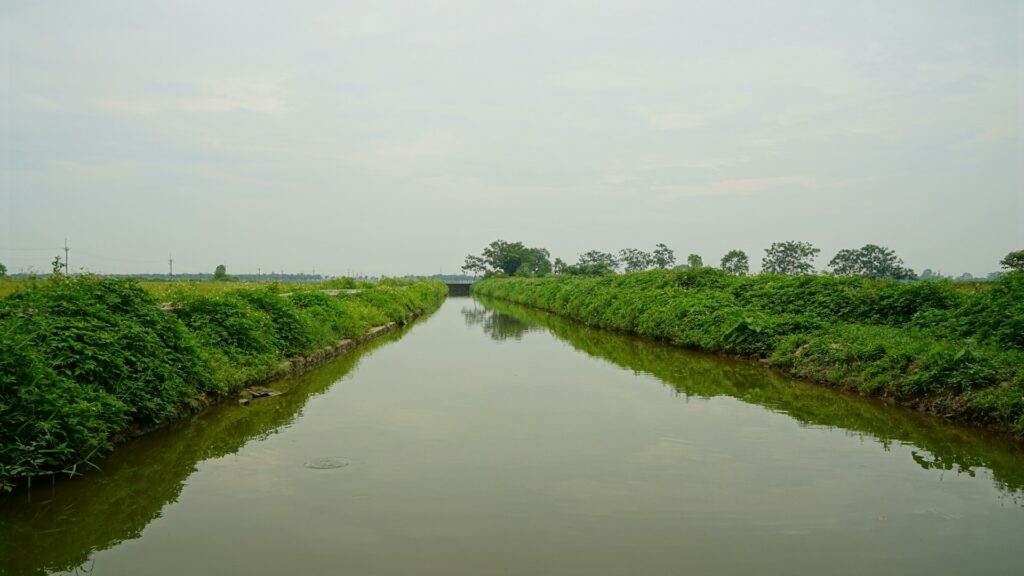The Funan Techo Canal PPP is a key infrastructure initiative launched by Cambodia in partnership with China to transform inland water transport. Spanning 151.6 kilometers, it links the Bassac River near Phnom Penh with Kep province, enabling 3,000 DWT vessels to move cargo more efficiently. Developed under a build-operate-transfer (BOT) model, it involves Chinese firms, particularly China Road and Bridge Corporation (CRBC), leading construction. Additionally, it supports Cambodia’s long-term logistics goals and regional connectivity. This project highlights how strategic PPPs can enhance national resilience while driving sustainable economic growth through improved infrastructure and international cooperation.
The Funan Techo Canal PPP relies on a carefully balanced ownership structure that ensures majority national control while integrating international expertise. Cambodian investors hold 51% of the equity, whereas Chinese partners hold 49%. Key stakeholders include Overseas Cambodia Investment Corporation, Phnom Penh Autonomous Port, and Sihanoukville Autonomous Port, in cooperation with China Road and Bridge Corporation (CRBC). Notably, CRBC is responsible for engineering, procurement, and construction (EPC), bringing specialized experience to the initiative. The project structure also aligns with Cambodia’s evolving PPP legislation, promoting investment while preserving sovereignty. Furthermore, this arrangement supports Cambodia’s broader goal under the 2030 National Logistics Master Plan to reduce transportation bottlenecks. By combining local ownership with global technical know-how, Cambodia demonstrates how strategic PPPs can address infrastructure gaps. This type of collaboration represents a growing model in Southeast Asia, where nations increasingly seek to safeguard national interest while securing global investment for critical infrastructure.
The Funan Techo Canal PPP offers wide-reaching socio-economic benefits. According to Cambodian officials, the project will create nearly 50,000 jobs both directly in construction and logistics, and indirectly in agriculture, tourism, and services. Farmers will benefit significantly from better irrigation networks and easier access to local and foreign markets. Currently, over 90% of domestic freight relies on road transport, which is costlier and time-intensive. By shifting heavy cargo to inland waterways, the canal is expected to save Cambodia up to $80 million annually. This efficiency gain will boost agriculture output and attract manufacturing to areas along the corridor. Moreover, tourism is projected to increase, especially in regions like Kep and Takeo. With reduced transport times and new access to trade ports, Cambodian exports could reach international markets faster. These benefits align with the ASEAN Connectivity 2025 vision, positioning Cambodia as a rising logistics hub in the Mekong subregion.
Environmental and social responsibility is a key feature of the Funan Techo Canal PPP. A full environmental impact assessment (EIA) was completed by 48 specialists to ensure the project met national and regional standards. Their findings confirmed minimal impact on biodiversity, as the canal’s route avoids any national reserves or ecologically sensitive areas. Resettlement concerns were addressed proactively, routes were selected to bypass densely populated areas and heritage zones. Furthermore, the government has initiated community consultations and a compensation process that aligns with international standards. Importantly, the project follows all protocols under the 1995 Mekong Agreement and has secured clearance from the Mekong River Commission. As a civilian infrastructure initiative, it is governed strictly under Cambodian law. In addition, the canal contributes to climate resilience by improving seasonal water management. These practices demonstrate Cambodia’s commitment to sustainable development, setting a standard for environmentally responsible PPPs in Southeast Asia.
The Funan Techo Canal PPP represents a broader trend of regional collaboration through public-private partnerships. Prime Minister Hun Manet’s recent meeting with China Communication Construction Company (CCCC) Chairman Wang Tongzhou highlights this deepening cooperation. According to Wang, the project is more than infrastructure, it’s an economic engine for national growth. The initiative forms part of the Belt and Road Initiative (BRI) and showcases how Chinese engineering complements Cambodian policy leadership. The BOT structure and majority local ownership make this PPP a replicable model for other ASEAN countries. By combining funding, engineering capacity, and legal frameworks, this partnership bridges development needs and sovereignty concerns. As more nations in the Mekong basin look to enhance inland water transport, Cambodia’s example may guide future projects. Already, the initiative is gaining recognition as a model of inclusive and sustainable PPP planning. Through this canal, Cambodia not only builds PPP’s infrastructure but also redefines its economic future.




